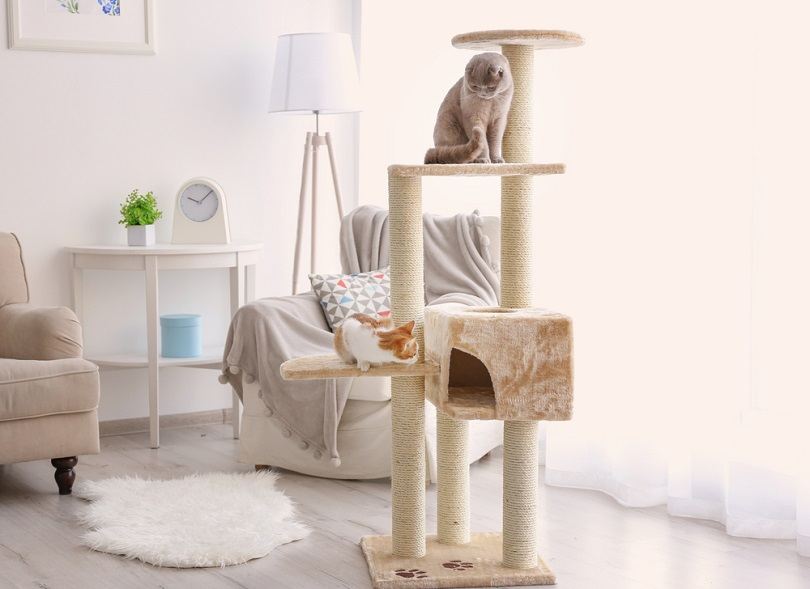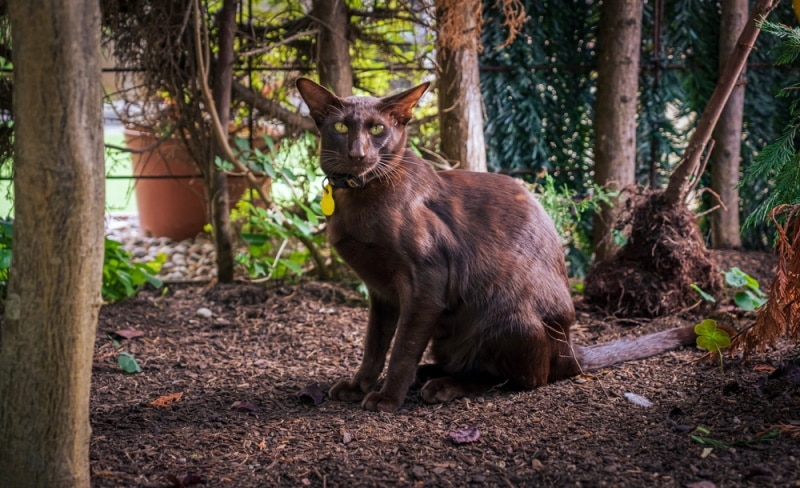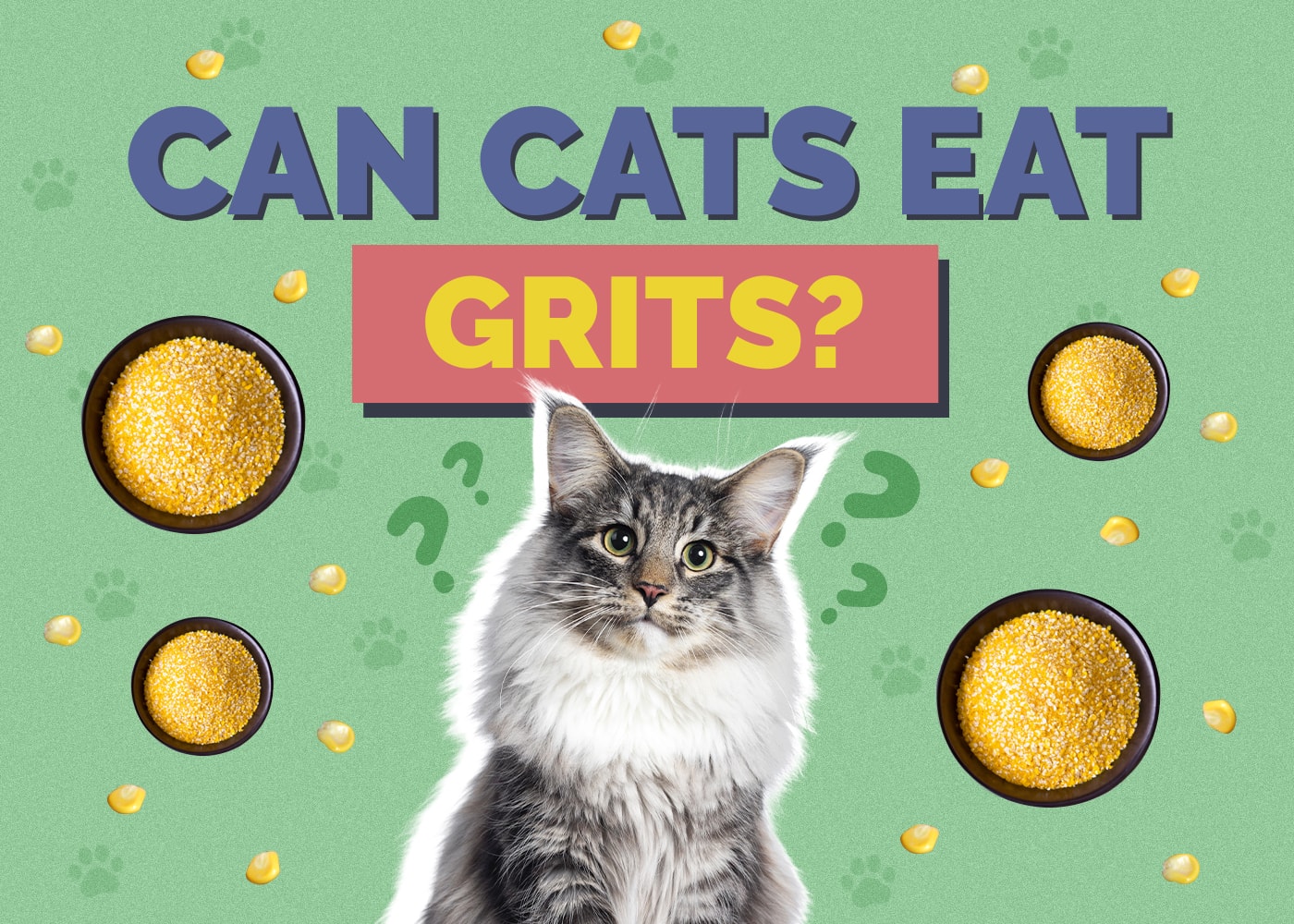Can Cats Eat Frosty Paws? Vet-Approved Facts & FAQ
Updated on
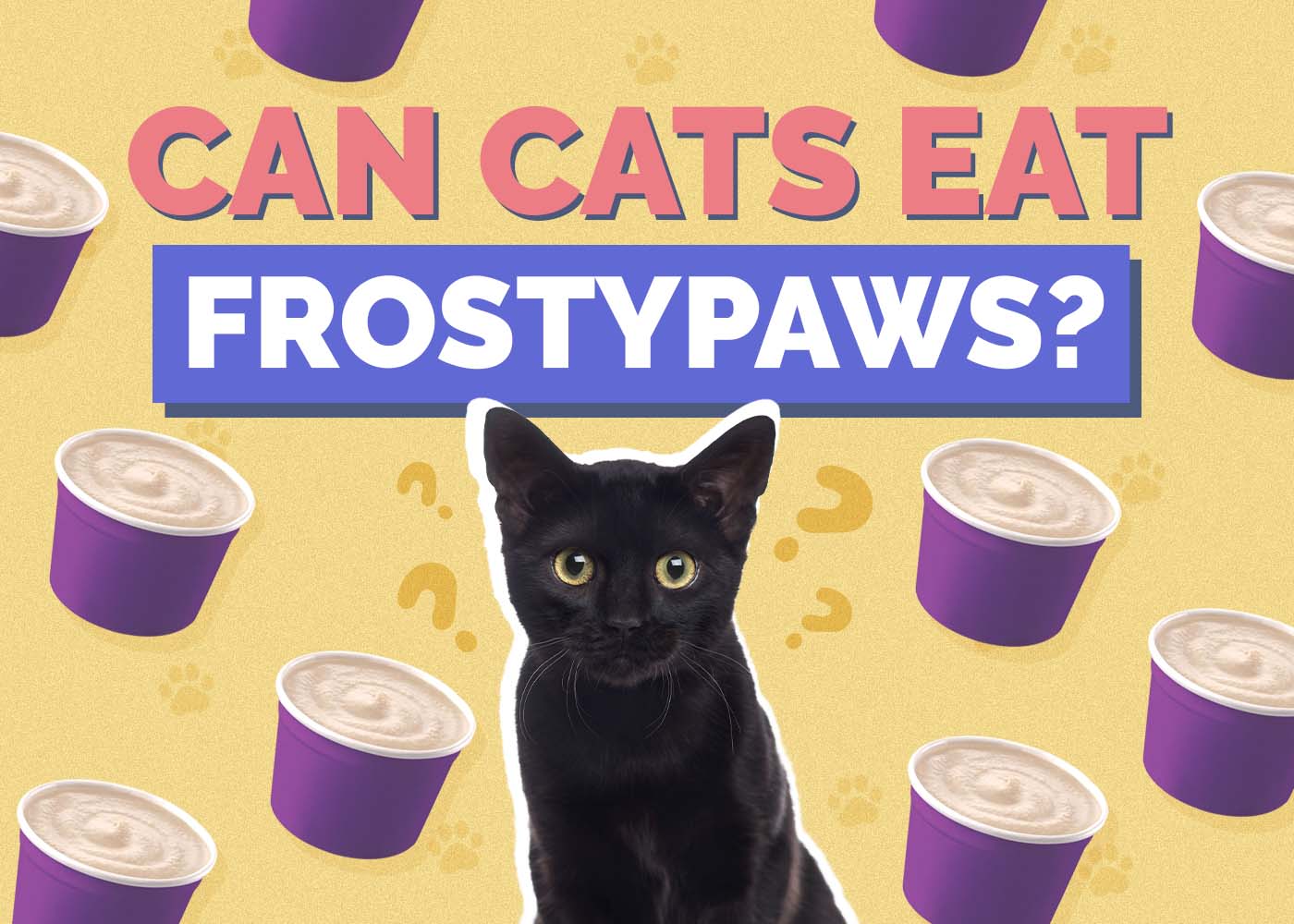
Frosty Paws is a brand of frozen ice cream-like treats beloved by many dogs and pet parents, specifically formulated with dogs’ needs in mind. Whether you have both cats and dogs or you’re just searching for new cold treats for your kitty, you might think these lactose-free treats are purr-fect for your cat. Sadly, they’re not. While Frosty Paws isn’t outright toxic to cats, it’s also not crafted with them in mind, and there are many better treats you can choose instead.
For a better idea of what’s exactly in Frosty Paws, why it’s not really for cats, and what you can feed your cat instead, we’ve got all the info you need. Read on down below for the details!
What’s in Frosty Paws?
Frosty Paws is a lot like ice cream and even once contained lactose, but it was reformulated without lactose after Nestle acquired the brand. Instead, Frosty Paws uses ingredients like coconut oil, whey, flavoring, guar gum, maltodextrin, and other pet-safe ingredients. The exact formula varies, with plain vanilla and peanut butter flavored being the most popular offerings.
Notably, Frosty Paws does contain beneficial ingredients for cats. It’s fortified with great additions of extra protein, vitamins, and minerals, but they don’t make up for the fact that it’s simply not made for feline stomachs. Cats with robust stomachs can tolerate a bit of it every now and then, but it’s far from ideal.
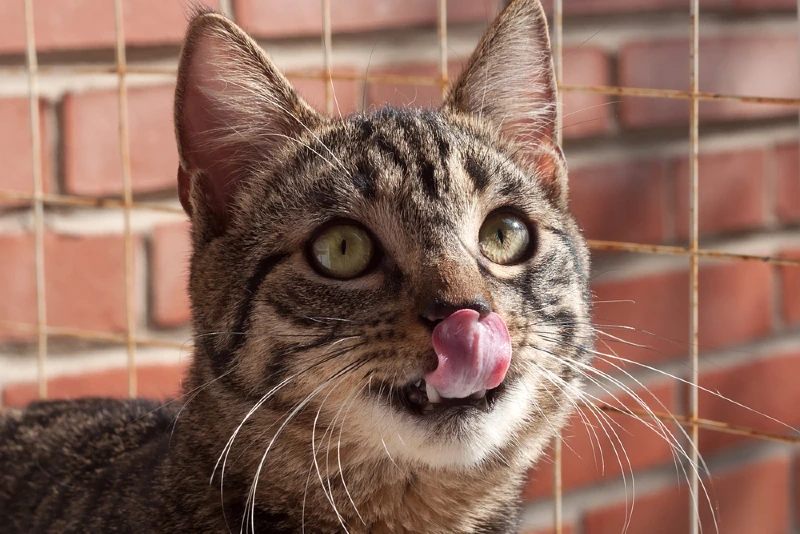
Risks of Feeding Your Cat Frosty Paws
Frosty Paws is a delicious treat for dogs, but cats are built differently than canines and need different types of nutrition in their diets. When it comes to Frosty Paws, it simply isn’t healthy and can even cause some medical problems. Just to be safe, we’d avoid serving Frosty Paws to your kitty for the following reasons.
- Upset stomach: Cats don’t need sugar in their diet, and sweet treats like Frosty Paws can upset their stomachs, potentially causing diarrhea, abdominal pain, and vomiting.
- Choking hazard: The chunky texture of Frosty Paws can be hazardous for cats and especially kittens.
- Allergies: Because of the many ingredients used, there’s a slight chance your cat is allergic to one of them.
Can My Cat Eat Ice Cream?
No, your cat should not eat ice cream or any form of dairy formulated for human consumption. That means cheese, milk, ice cream, or anything with lactose. Like dogs, cats are lactose intolerant, and their bodies lack the enzymes necessary to digest dairy. If your cat eats dairy, like ice cream, they’ll probably enjoy the cool, creamy flavor, but nobody is going to like what happens later in the litter box because of it. That’s right—dairy can cause upset stomachs, diarrhea, and even vomiting!
This might come as a shock if you’ve ever heard of the old chestnut about cats loving cream. They do love cream because it’s high in fat, but it causes the same digestive upset and diarrhea as ice cream or milk. As a general rule of thumb, strive to keep your cat away from any product that contains lactose.
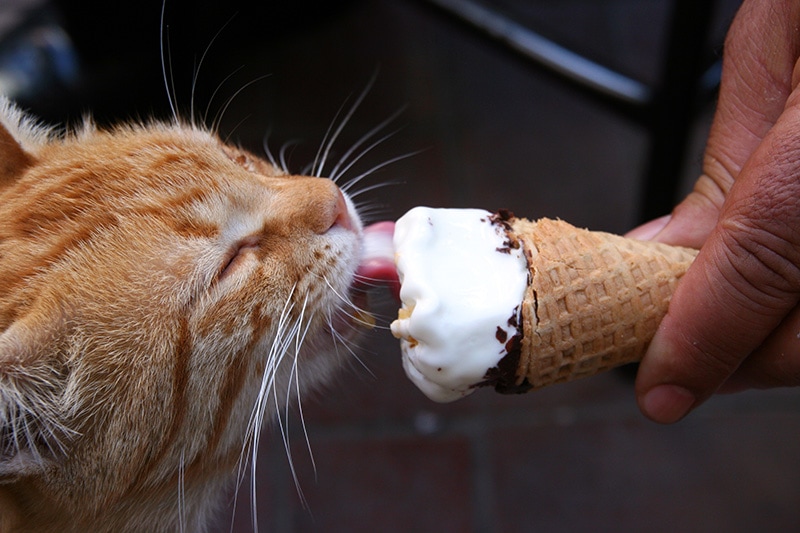
What Treats Can I Give to My Cat Instead of Frosty Paws?
So far, we have already established that cats can technically eat Frosty Paws, but really shouldn’t, especially on a regular basis. Instead of taking that chance, there are lots of yummy treats you can prepare instead with nutritious ingredients that have your cats’ dietary needs in mind. Scroll down below for some ideas you can get started on ASAP.
- Chilled strips of grilled chicken or fish.
- Chill a can of tuna in the fridge and feed it as a low-effort cold treat.
- Place some wet food and a bit of water in an ice tray to create meaty kitty-sicles.
- Freeze garlic and onion-free chicken stock in ice tray cubes and add to your cat’s water bowl for a cooling flavor boost.
- Simply adding ice cubes to your cat’s water bowl is a great way to help them cool down on hot days.
What Do Cats Normally Eat?
In the wild, cats subsist on nearly anything small that moves, making them obligate carnivores. In our homes, though, they need a balanced mix of protein, fat, a few carbs, and other essential nutrients to grow strong, stay healthy, and maintain a healthy body. Taurine is especially important for heart health, vision, a healthy immune system, and to aid digestion.
If your cat’s sick of the same old kibble, you might be wondering how you can mix it up without depriving them of the critical nutrients they so desperately need. Check out some staple foods you can feed to your cat daily to supplement their normal meals and spice things up.
- Chicken: A classic lean meat loved by cats and rich in nutrients like protein, taurine, niacin, and trace nutrients.
- Turkey: Fattier than chicken, turkey is another great source of taurine, protein, niacin, selenium, and other trace minerals.
- Fish: Fish are high in taurine, fatty acids, and protein. Tuna, salmon, and sardines are good options, but beware that longer-lived fish tend to have harmful mercury in their bodies.
- Lamb: Lamb is a more atypical meat choice rich in protein, vitamin B6, zinc, and phosphorus.
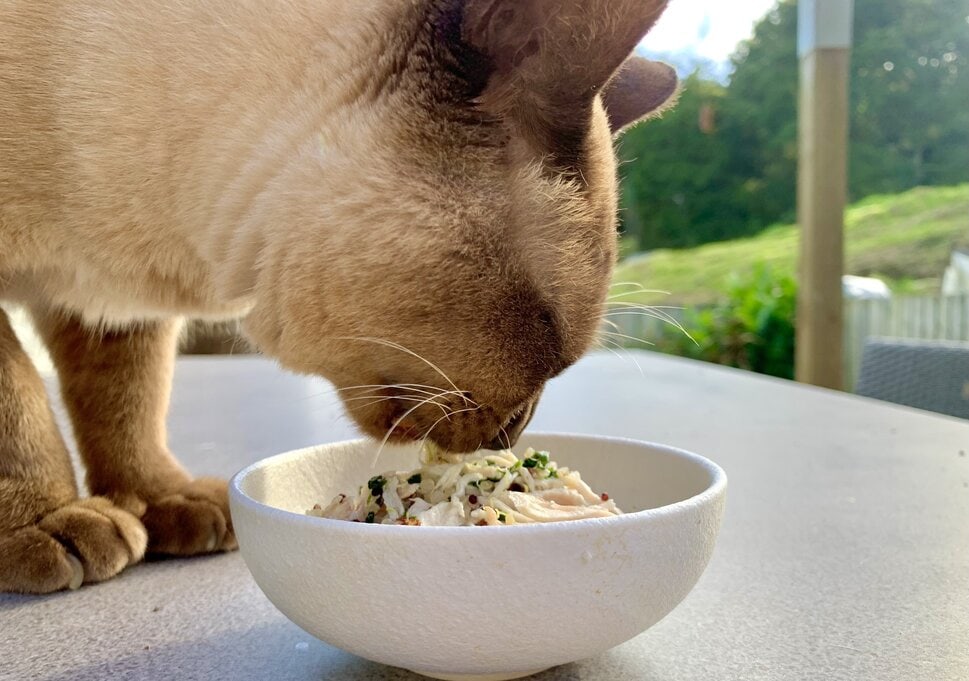
Wrapping Up
Cats can technically indulge in small servings of Frosty Paws, but it’s not formulated with their dietary needs in mind and can cause stomach upset. Instead, we recommend freezing meats, fish, or plain old chicken broth to give your cat a tasty and healthy treat with their needs in mind first.
Featured Image Credit: Mike Mozart, Flickr



